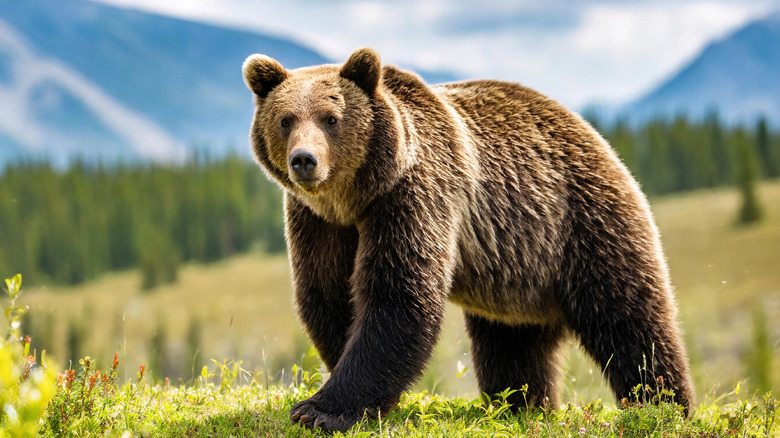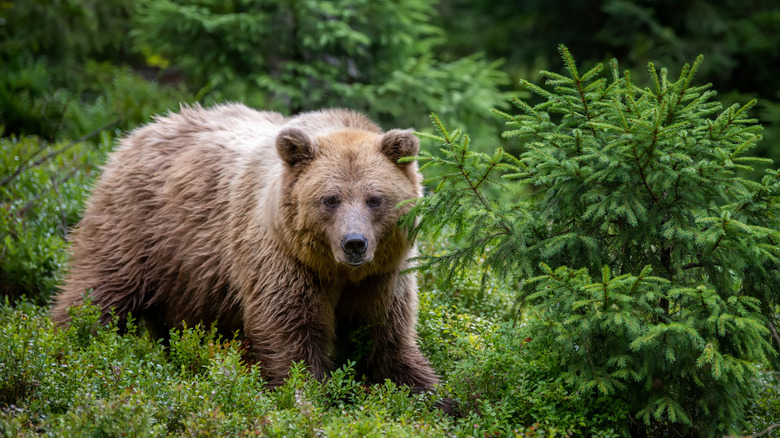Here's How Fast Bears Can Run And Why You Shouldn't Try To Outrun Them
Bears are astonishingly fast, outpacing even elite human athletes. Across North America, the three prominent species — polar bears, brown bears, and American black bears — are all speedsters in their own right. Black bears, the smallest of the trio, can reach speeds of 30 mph. Meanwhile, the grizzly, a subspecies of the brown bear, holds the title of the fastest bear, capable of hitting an impressive 35 mph. Even polar bears, the largest land carnivores, can sprint up to 25 mph despite their massive size and adaptation to icy terrain.
To put this in perspective, Usain Bolt's top recorded speed during his world-record sprint was 27.8 mph— barely enough to outrun the slowest bear. What makes bears truly formidable is not just their speed but their agility. They can accelerate rapidly, climb steep inclines, and navigate dense forest or rocky terrain without slowing down. While humans rely on stamina for distance running, bears are built for explosive bursts of speed, which they use to chase prey or evade threats.
Confrontations with these speedy predators are becoming more frequent, with bear encounters on the rise in 18 U.S. states. It's important to know that bears are most active during spring and summer, especially at dawn and dusk, when people are likely to be hiking or camping. These overlapping active times heighten the risk of surprise encounters, where a bear's speed becomes even more alarming.
Running triggers a bear's predatory instincts
If a bear charges, trying to outrun it is the worst thing you could do. While most bears are not actively hunting humans, running away can trigger their predatory instincts. Bears evolved to chase fast-moving animals in their natural environments, so sprinting humans may inadvertently resemble prey. Grizzlies, in particular, are known for their aggressive nature, and fleeing can escalate a dangerous situation. Even black bears, which are less likely to attack unprovoked, might see a running figure as an opportunity for pursuit.
The danger of running is compounded by bears' remarkable ability to traverse challenging terrain. Grizzlies, for example, can charge downhill just as easily as they can climb uphill, and their powerful muscles enable them to sustain high speeds over short distances. Black bears, while more agile, can quickly climb trees or outmaneuver humans in dense forests.
If you encounter a bear, your instinct to run could put you in greater danger. Instead, experts recommend standing your ground and speaking in a calm, firm voice. Always know what to do if a bear shows signs that it's going to attack. If it shows aggression, slowly back away without turning your back on it. Running is not only ineffective but also dangerous, as bears' extraordinary speed and natural instincts make them far superior in any race.

